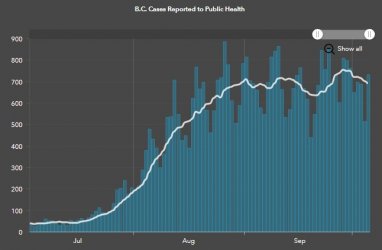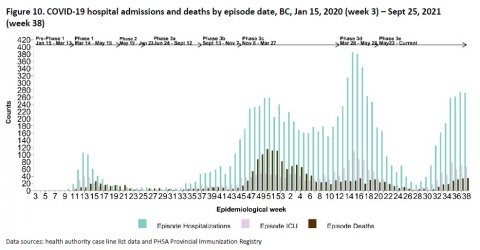British Columbia is a good comparator for NSW and Victoria - it has foundational, cultural and demographic similarities to those states.
The Canadian borders have never been universally closed. It has always been possible (subject to transport availability) for Canadian citizens and permanent residents to leave and enter Canada. Canada's been open to tourism in a limited way since about July. The US land border is open to US residents. Full vaccination and a negative PCR test are required to come to Canada if you're a foreigner, with unvaccinated citizens and permanent residents subject to self-isolation and testing protocols.
BC (and most of the rest of Canada) has a range of public health restrictions still in place. In BC, masks must be worn in all indoor public spaces and there are capacity restraints on indoor events (a bit complicated, but basically 50% of venue capacity). Proof of vaccination is required to access indoor non-essential activities such as the gym, restaurants, bars, concerts, theatre, sports matches and other indoor recreational activities. There are no exceptions or exemptions for the proof of vaccination scheme. The Chief Health Officer of BC takes the view that if you are one of the tiny number of people with a proved health condition that precludes vaccination, you are in a vulnerable health position and should not be exposing yourself or others to the greater risk of acquiring or transmitting a Covid infection as an unvaccinated person.
British Columbia is at these vaccination levels:
D1 total population = 79.45% (89.83% 12+ eligibles)
D2 total population = 73.36% (82.97% 12+ eligibles)
(Pfizer has submitted an application to Health Canada for marketing approval of its 5 to 11 vaccine, and BC has said it is ready to go immediately on the approval being given. My prediction is that vax rates will top out at 95% of 5+ eligibles once that happens, which will be about 85% of the total population).
BC "re-opened" at 70% D1 on 1 July. The graphs below show what things have looked like since then, in an environment of increased human interactions. The pandemic in BC is now fairly and squarely a pandemic of unvaccinated adults. They are consuming our healthcare resources and driving doctors and nurses mad and sad as those incredible medical professionals treat what are largely easily preventable illnesses.
View attachment 261513View attachment 261514
The moving 7 day average case count ranged between 634 and 754 throughout September. If you split out the
vaccinated hospitalisations and deaths lines from the above graph they're basically flat lines close to the zero axis. The overwhelming majority of new cases, hospitalisations and deaths are in unvaccinated adults. There's about 350 people in Covid wards on any given day at the moment, over 90% of whom are unvaccinated or only partially vaccinated.
So NSW and Victoria need to prepare themselves - this is what re-opening might look like for them. I am personally mostly fine with the approach taken by BC. As a fully vaccinated person, I can enjoy pretty much everything I enjoyed pre-pandemic. All of the activities I do take place in a fully vaccinated environment, socially I only mix with fully vaccinated people and the only time I am potentially exposed to unvaccinated people (at the supermarket, on public transport), everyone has to wear a mask.
But in a population of 4.9 million, the total of unvaccinated people (including children, who are efficient virus spreaders even they are less affected by the virus) is 980,000. That's a lot of people still circulating Covid and clogging up the hospitals. Even if we get to 85% fully vaxxed, that will leave 735,000 people to continue to spread Covid around with abandon. "Living with Covid" is not cost-free, but the alternative (locked down and socially isolated) I think comes at a greater cost.

















